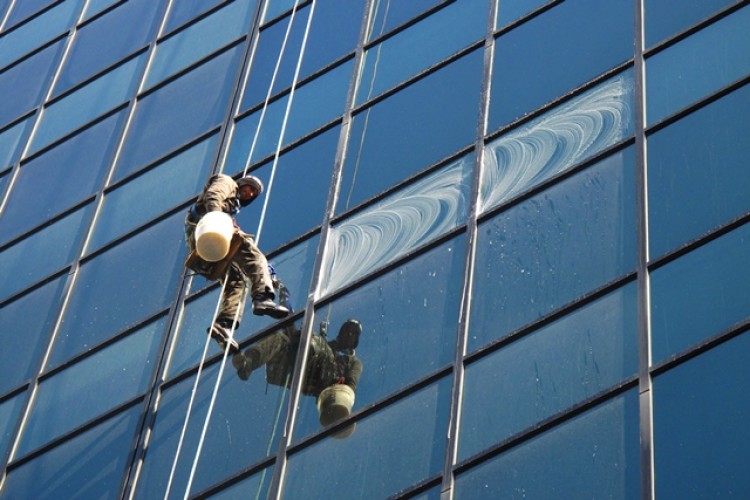They say that their smart windows could be on the market within three to five years.
University College London (UCL), supported by the Engineering & Physical Sciences Research Council (EPSRC), have produced prototype samples that confirm that the glass can deliver three key benefits: self-cleaning, energy-saving and anti-glare
Self-cleaning: The window is ultra-resistant to water, so rain hitting the outside forms spherical droplets that roll easily over the surface – picking up dirt, dust and other contaminants and carrying them away. This is due to the pencil-like, conical design of nanostructures engraved onto the glass, trapping air and ensuring only a tiny amount of water comes into contact with the surface. With normal glass, raindrops cling to the surface, slide down more slowly and leave marks behind.
Energy-saving: The glass is coated with a 5-10 nanometre film of vanadium dioxide (a million nanometres = 1mm). During cold periods stops thermal radiation escaping, preventing heat loss; during hot periods it prevents infrared radiation from the sun entering the building. Vanadium dioxide is a cheap and abundant material, combining with the thinness of the coating to offer real cost and sustainability advantages over silver/gold-based and other coatings used by current energy-saving windows. The UCL team calculate that heating bills could be cut by as much as 40%.
Anti-glare: The design of the nanostructures gives the windows the same anti-reflective properties found in the eyes of moths and other creatures that have evolved to hide from predators. It cuts the amount of light reflected internally in a room to less than 5% – compared with the 20-30% achieved by other prototype vanadium dioxide coated, energy-saving windows.

UCL project leader Dr Ioannis Papakonstantinou said: “This is the first time that a nanostructure has been combined with a thermochromic coating. The bio-inspired nanostructure amplifies the thermochromics properties of the coating and the net result is a self-cleaning, highly performing smart window.”
He added: “It’s currently estimated that, because of the obvious difficulties involved, the cost of cleaning a skyscraper’s windows in its first five years is the same as the original cost of installing them. Our glass could drastically cut this expenditure, quite apart from the appeal of lower energy bills and improved occupant productivity thanks to less glare. As the trend in architecture continues towards the inclusion of more glass, it’s vital that windows are as low-maintenance as possible.”
Discussions are now under way with UK glass manufacturers. The key is to develop ways of scaling up the nano-manufacturing methods that the UCL team has developed, as well as scaling up the vanadium dioxide coating process.
Dr Papakonstantinou said: “We also hope to develop a ‘smart’ film that incorporates our nanostructures and can easily be added to conventional domestic, office, factory and other windows on a DIY basis to deliver the triple benefit of lower energy use, less light reflection and self-cleaning, without significantly affecting aesthetics.”
Got a story? Email news@theconstructionindex.co.uk



